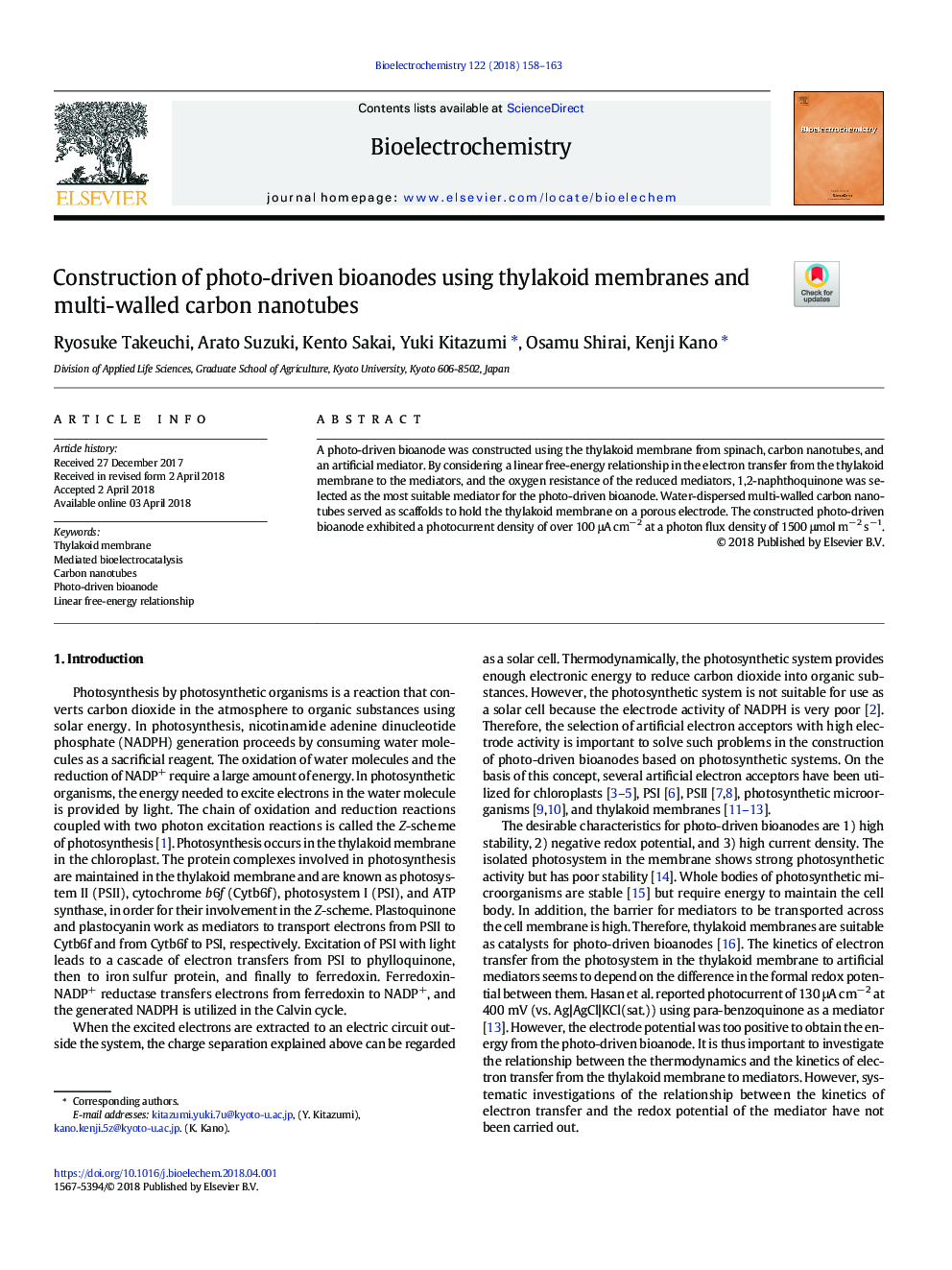| Article ID | Journal | Published Year | Pages | File Type |
|---|---|---|---|---|
| 7704492 | Bioelectrochemistry | 2018 | 6 Pages |
Abstract
A photo-driven bioanode was constructed using the thylakoid membrane from spinach, carbon nanotubes, and an artificial mediator. By considering a linear free-energy relationship in the electron transfer from the thylakoid membrane to the mediators, and the oxygen resistance of the reduced mediators, 1,2-naphthoquinone was selected as the most suitable mediator for the photo-driven bioanode. Water-dispersed multi-walled carbon nanotubes served as scaffolds to hold the thylakoid membrane on a porous electrode. The constructed photo-driven bioanode exhibited a photocurrent density of over 100 μA cmâ2 at a photon flux density of 1500 μmol mâ2 sâ1.
Keywords
Related Topics
Physical Sciences and Engineering
Chemistry
Electrochemistry
Authors
Ryosuke Takeuchi, Arato Suzuki, Kento Sakai, Yuki Kitazumi, Osamu Shirai, Kenji Kano,
